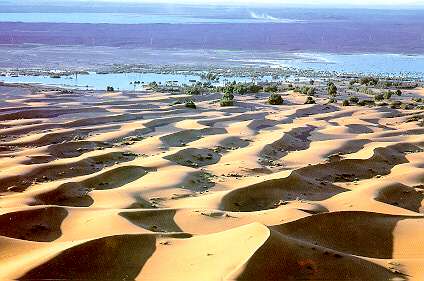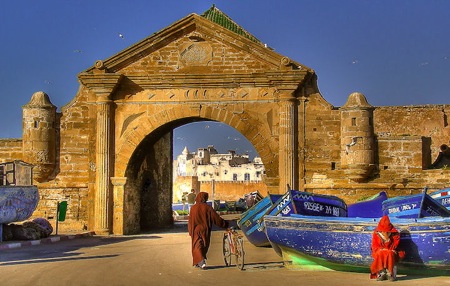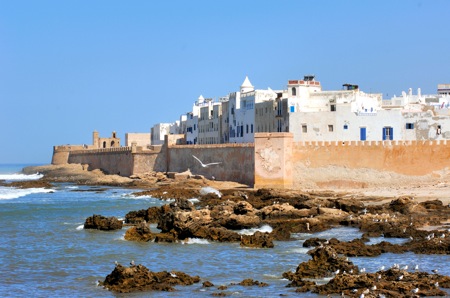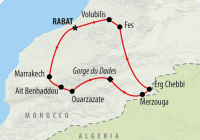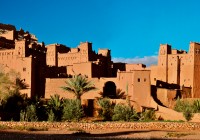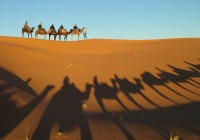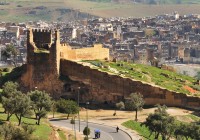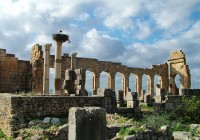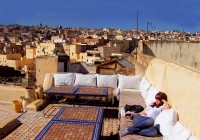Meets Berber in Morocco
Morocco Berbers


Different tribes of Berbers inhabit different regions in Morocco. Drawa Berbers are found in the Draa Valley. The Dades live in the North East, The Mesgita, Seddrat and Zeri tribes are along the rives of the North West. Moroccan Rif region is home to the Ghomara.
To better know the Berbers of Morocco, book a Moroccao tour adventure, trekking in the High Atlas mountains as well as other places. Visit the palm oasis’s of the Draa Valley or explore the Sahara by camelback, just to mention a couple. You’ll visit the many villages along the way. The Berber people are incredibly friendly and will offer to share a glass of famous Moroccan mint tea or cook you a traditional Moroccan dish for your dinner.
Your Moroccan tour guide will help you chose the best route for you. Visit the markets of Marrakech or Fez and you will find many examples of Berber craftsmanship. Stunning silver jewelry by Tuareg and Amazigh artists, handmade babouches or belga made in the workshops are among the treasures you will find. If your tastes run to elegant embroidered caftans, or textiles such as Berber carpets, pillows, kilims and so forth you will find them too.

Talk to your Moroccan tour guide and operator and find your self on a vacation of your dreams. A Moroccan adventure will take you from the modern cities on the coast to Berber villages high in the Atlas or Rif Mountains where you can even trek in Chefchaouen.
You can go trekking or visit during one of the many festivals to see age-old Berber customs being practiced in today’s world. Stay in a modern riad or an ancient Kasbah. It matters not where you go in this magical land as you will find the adventure of a life time. You can customize your tour to suit your interests and needs. Book your Morocco tour and begin your adventure today.
In the past five years, I have lived in five different cities in three countries--not to mention taking an eight month world trip. If that doesn't classify as nomad status, please tell me what does. With that being said, none of my said “nomad activities” had prepared me for the Berber nomads I would encounter in the mountains of Morocco.
It was a drizzly morning, and my travel buddy Sam and I set out for a hike through Morocco's famous Todra Gorge. Half way into our journey the wind picked up, and the blowing rain caused us to lose the hiking trail. Debating whether or not to turn back, we agreed to hike a few more yards in hopes of picking up the trail again.

We couldn’t find the trail, but we did stumble upon a settlement of three caves surrounded by stone corrals with goats and chickens running wild. I was elated! I had heard stories of the indigenous Berber nomads residing in caves throughout the Moroccan mountains, but never did I expect to personally encounter these intriguing people. I quietly crept through the village, discreetly taking pictures when I eyed a family huddled around a fire cooking in their cave. Just as I pointed this out to Sam, the father turned to notice us. Just as I reached to clutch my backpack and bolt out of the village, (for fear the family would become upset at the sight of a trespasser) the man surprised me with a waving gesture. I would have normally declined, but the idea of meeting real Berber nomads was irresistible, and knowing this would surely make a great story for Let's Go, I only had one option; to enter.
The cave was ten feet deep with a seven foot ceiling and a stack of blankets lining the back wall. I could tell it was a well-loved cave as the walls were caked in dark soot from years of fires. The husband arranged blankets at the end of the cave for us to sit on. Through an act of charades and relaying the two words we knew in Berber, (saha-thank you and besaha-cheers) we introduced ourselves and thanked the family for inviting us in.
They poured us two glasses of thyme tea and handed us bread heaping with roasted vegetables. We ate our food wide-eyed while watching the family chat and the children playing on the dirt floor. We were amazed with our luck and the opportunity to experience true nomad life. We eventually thanked the family and continued on our way. The wife was even kind enough to redirect us to the hiking trail.
For the remainder of the hike I couldn't get my mind off these nomads and their cave lives. They didn't have bank accounts, running water, or even an address. They lived off of the land, trading their handmade textiles for clothes and food from the Arab Moroccans and gathering their belongings and move to Western Sahara for the winter when the weather became too cold. Yet, here they were inviting us into their cave and sharing with us the little food they had.
I thought long about the true meaning of nomad—someone without a home, moving from place to place. While I technically fall into that category, I have to give credit to the Berbers for being much more hardcore!
morocco culture,moroccan food,morocco food,moroccan cuisine,morocco beaches,moroccan meal,beaches in morocco,moroccan culture,hercules cave,hercules cave morocco






